Subscribe now and get the latest podcast releases delivered straight to your inbox.
The Lazy Sales Technique Your Buyers Hate? Scoping Disguised as Discovery

By Chris Duprey
Feb 8, 2023

If you’re a salesperson, you have to learn about your buyer. That’s a given.
But there’s a right way and a wrong way to do it. And too often, I see salespeople taking the quick and lazy path that alienates and annoys the very prospects they’re trying to win over.
You might call this discovery, but it’s actually more like scoping — that is, determining the scope of the eventual job. And your buyers hate it.
You know what I mean. I’m talking about those tired baiting discovery questions at the bottom of every salesperson’s bag of tricks.
Doing discovery this way gives discovery a bad name — when in fact this stage can be an absolute game changer for you and your buyers. I’m talking about something bigger and grander: questions that prompt actual self-discovery in your customers.
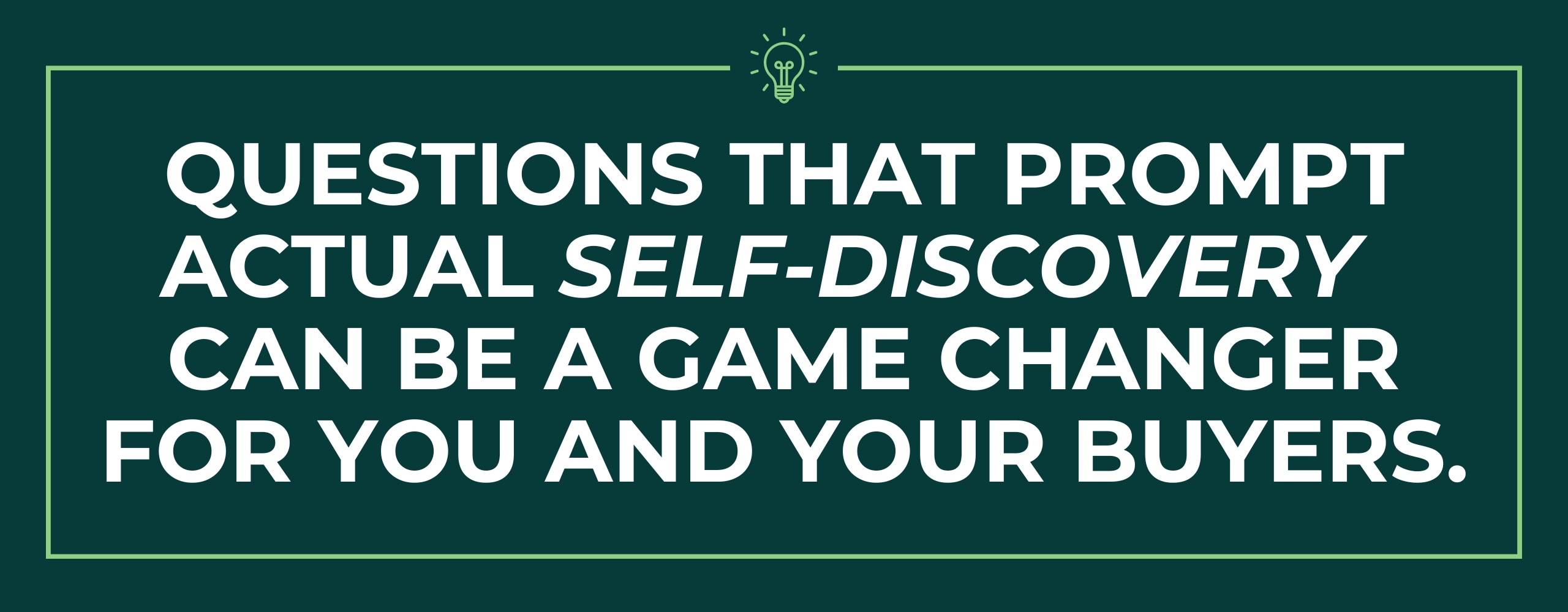
These are a little less easy to deploy but infinitely more powerful in their application. And once you learn how to use them, you’ll never go back.
Here’s why.
Everyone hates ‘checklist’ questions
I watch sales calls for a living. From client sales teams, from prospective clients, and from team members at IMPACT.
The worst ones to watch are those where “discovery” is just thinly veiled scoping.
Let me explain what I mean.
The sales rep gets on the call and starts asking questions that clearly come from some checklist:
What is the main problem you’re facing?
What is your budget?
When are you looking to make a purchase?
And so on.
The salesperson goes from question to question. The prospect offers short, clipped answers, which the rep transcribes into a form or database.
It’s mind-numbing for everyone involved, and even though the prospects are being asked a lot of questions, they don’t feel heard or understood. It’s more like a survey than a conversation. And often, they feel like their time has been wasted.
And they’re right.
Scoping disguised as discovery
I don’t fault the sales reps.
Are they being lazy? Sure. But the company that employs them has put together a lazy sales process with lazy questions that don’t focus on the buyer’s needs.
What the salesperson really is doing is scoping the deal — getting a sense of how the company will sell or service it — instead of actually “discovering” anything about the customer.
It’s not really discovery. It’s scoping disguised as discovery.
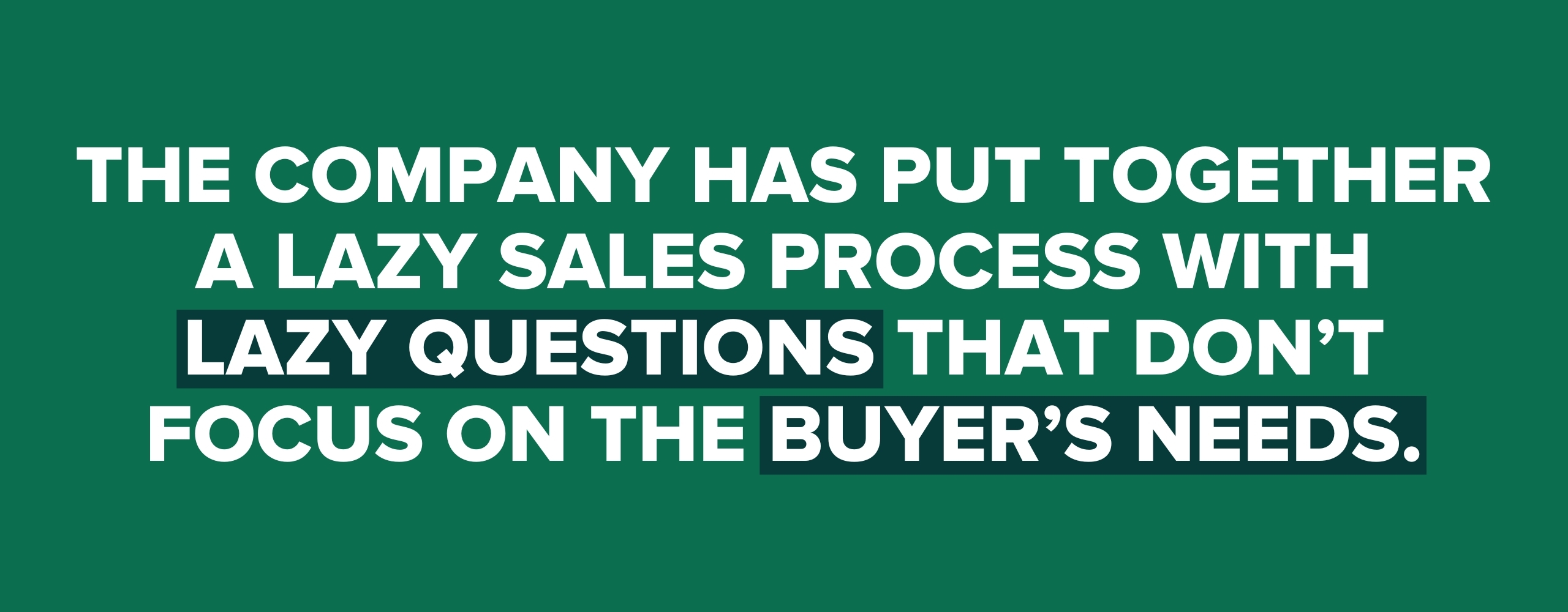
Now, scoping is vital. It’s totally necessary to service clients. But if you cram it into the wrong meetings, you leave your prospects feeling frustrated and pigeonholed — sitting there giving information they could easily share through a form ahead of time.
So I want to be clear, I’m not saying don’t do scoping. I’m saying don’t run the scoping/discovery hybrid playbook that wastes the valuable minutes you have with your prospect.
You can’t listen when you’re talking
A few years ago, Gong put out research based on more than 25,000 recorded B2B sales calls. The findings were pretty eye-opening:
Most salespeople talk for about 70% of any given meeting. Instead of learning about the buyer, they’re boasting about features. And the thing is — they don’t even realize they’re doing it.
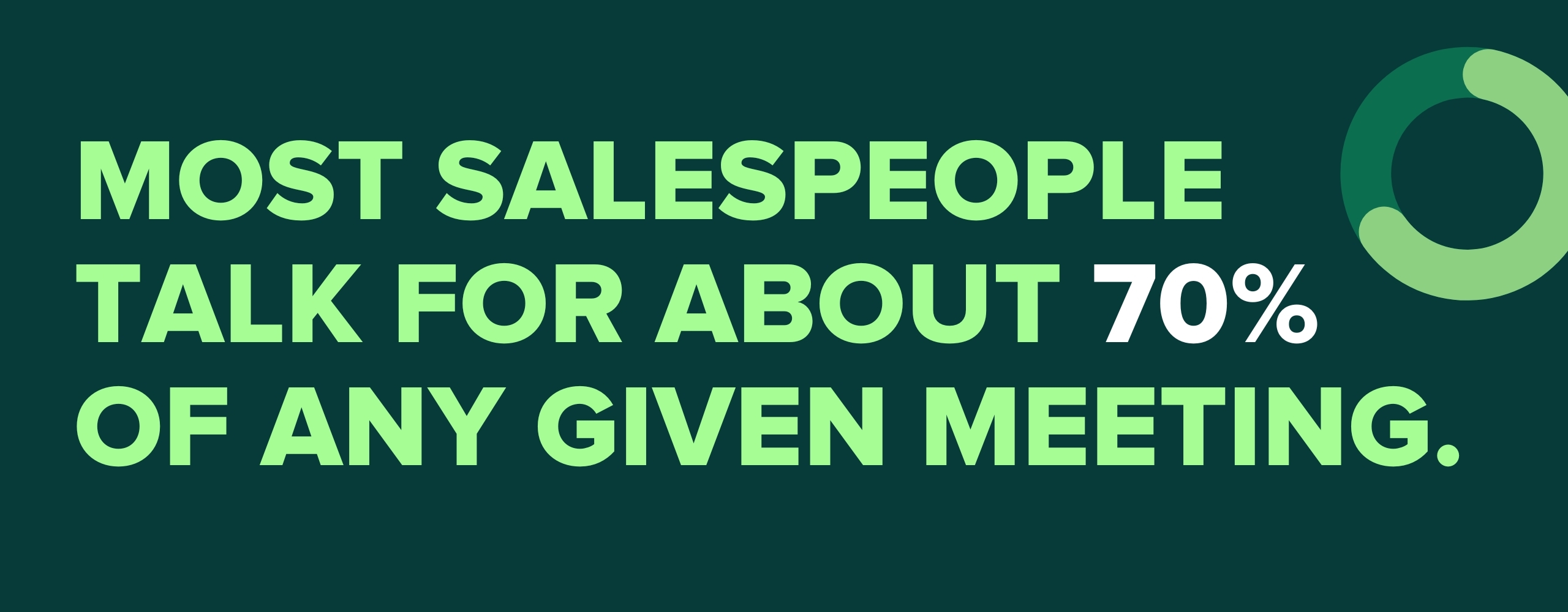
Rather than using questions to really understand the buyer, they use questions to find a way to start talking about themselves.
Each call, they ask the same questions, follow the same checklist, gather information, and look for a way in. When they hear something particular, they jump in, talking about features, options, and solutions, drowning out the buyer.
These sales reps don’t take the time to listen and really understand the problem the buyer is facing.
Which brings us to the second major finding from Gong’s research: The most successful sales reps — those who close the most and earn the biggest commissions — listen more than they talk.
In fact, it’s almost the reverse of the average. Instead of talking for 70% of the meeting, top-performing sales reps talk for about 40%, leaving the bulk of the meeting open for the prospect to explain challenges and ask questions.
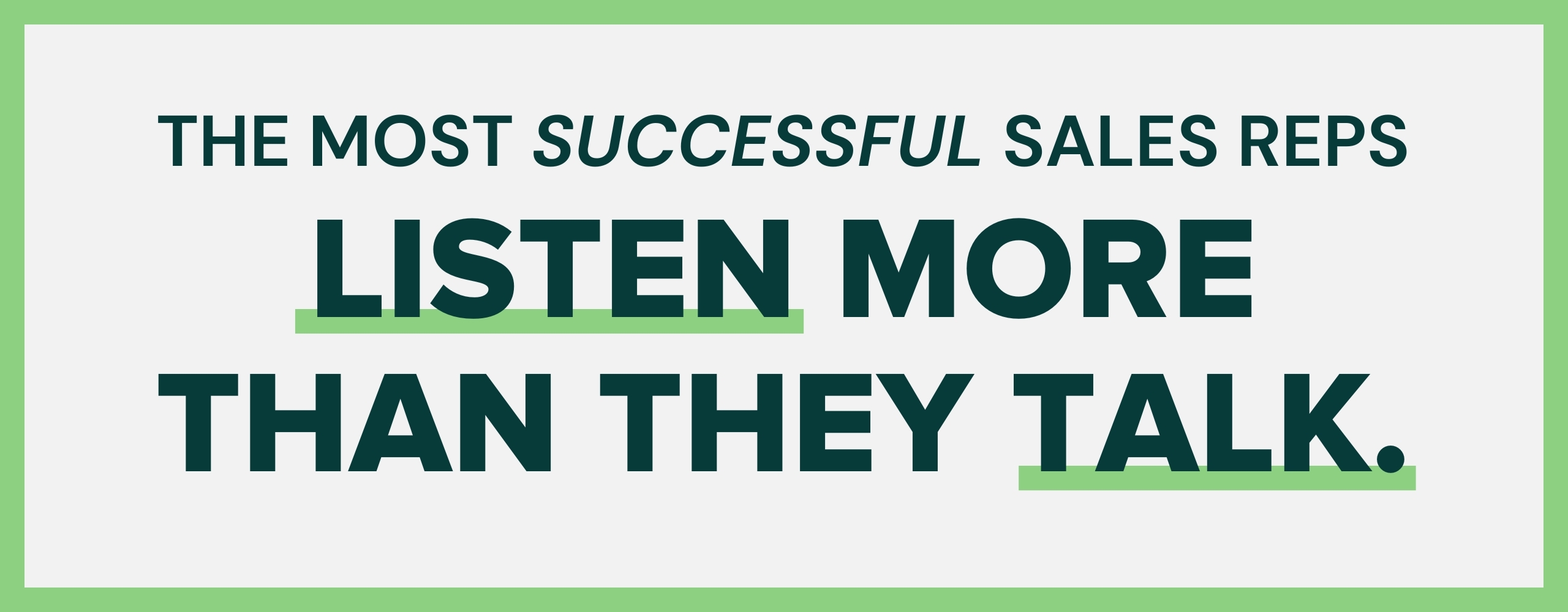
To do this right, the best sales reps use questions to prompt self-discovery.
How to prompt self-discovery in your buyers
Self-discovery is a process that unlocks the true needs, fears, and hopes in your buyers, allowing you to truly understand what they want and need. Here’s how to use the right questions during your sales calls to prompt self-discovery.
Step 1: Get to the root of their actual problem
When my kids are upset, it takes some time to figure out what’s actually going on.
They might melt down about not being able to find their sneakers, but I know it’s never about the sneakers. It’s something else, usually stress about schoolwork, friend issues, or maybe they’re just not feeling well.
Buyers are the same way.
You have to dig to understand what they’re really facing and what they’re trying to solve. Don’t accept their first answer. Typically, the truth is at least three questions deep. You will know when you get to the truth. This will amaze both you and the buyer.
Because here’s the thing: Sometimes the buyers themselves might not even fully understand what their challenge is.
In Donald Miller’s Building a StoryBrand, he talks about the external, internal, and psychological levels of any given problem. He breaks it down like this:
- Your external problem is the surface-level one. The kind of thing you share when you’re asked the first question. The kind of thing that brought you into the call with the salesperson.
Think: We need new furniture for our office. - The internal problem they face is more subtle. This is the frustration underpinning the external problem.
Think: Furniture in the past hasn’t held up to daily wear. It looks cheap, too. - Deeper still is the psychological problem that gets to the core of someone’s identity. This is about fears and desires.
Think: My office should reflect the kind of company we are: cutting edge and high quality.
Now, if you’re asking basic questions, which answer are you going to get? The most basic, surface-level stuff.
There’s no way someone is going to give up that third answer right away. They might not even know it themselves. But if you ask good questions — and keep asking, you’ll get there.
And when you do, you’ll really understand your buyer.
Step 2: Guide the buyer to articulate what happens if they don’t solve this problem
What does the future look like if they solve this problem? What does it look like if they don’t?
Great salespeople will help their buyers see the gap between where they are and where they want to be.
For most buyers, their problems have emotional elements. This is where patience and trust-building come into play. Don’t rush them. Work through this with the buyer. Don’t do it for them.
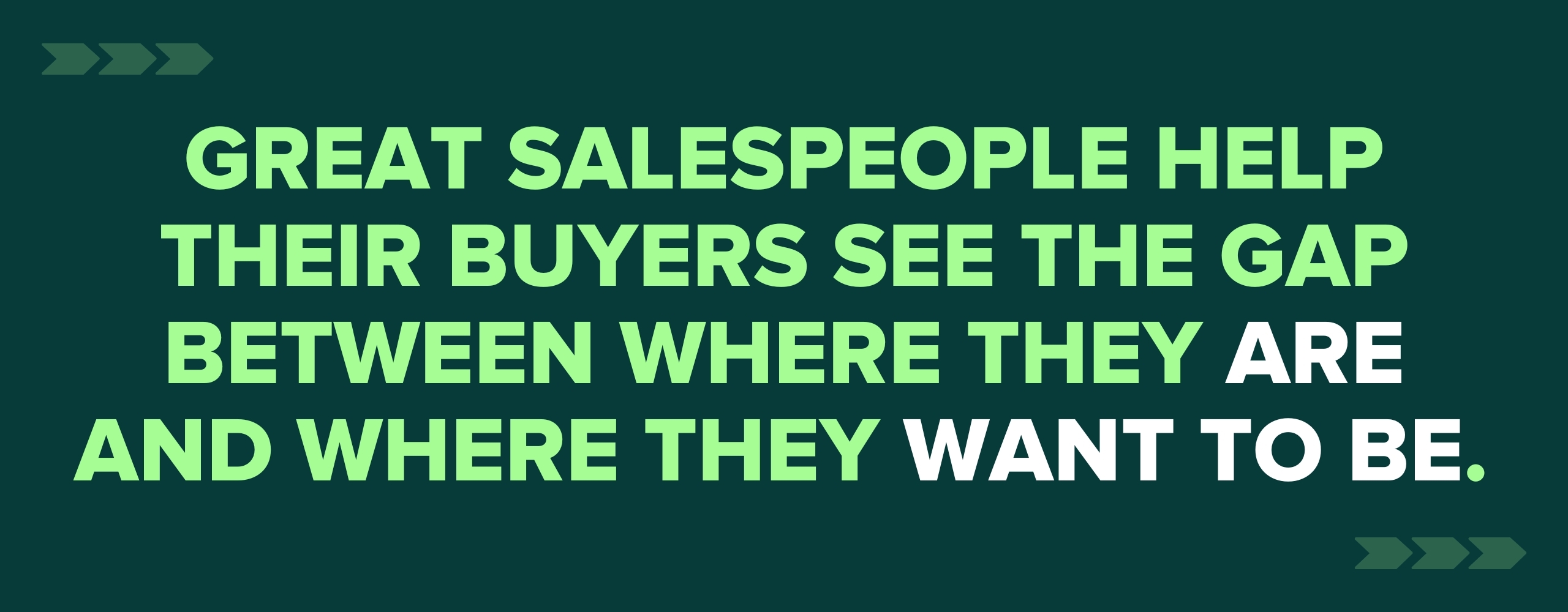
Let them understand what a solution will feel like. Relief, efficiency, simplicity. Whatever it may be.
Step 3: Help them see the connection between what you sell and what they need
Help your buyers see a new and different future working with your company. Help them see (and articulate) how your solution can fill in the gap that stands between them and the future they want.
Guide them to understand how what you sell can help them. How they can achieve what they want to and avoid what they don’t.
Suddenly, they see that you’re indispensable.
Your buyers might not understand their challenges
The scoping-disguised-as-discovery questions I described earlier generate default answers.
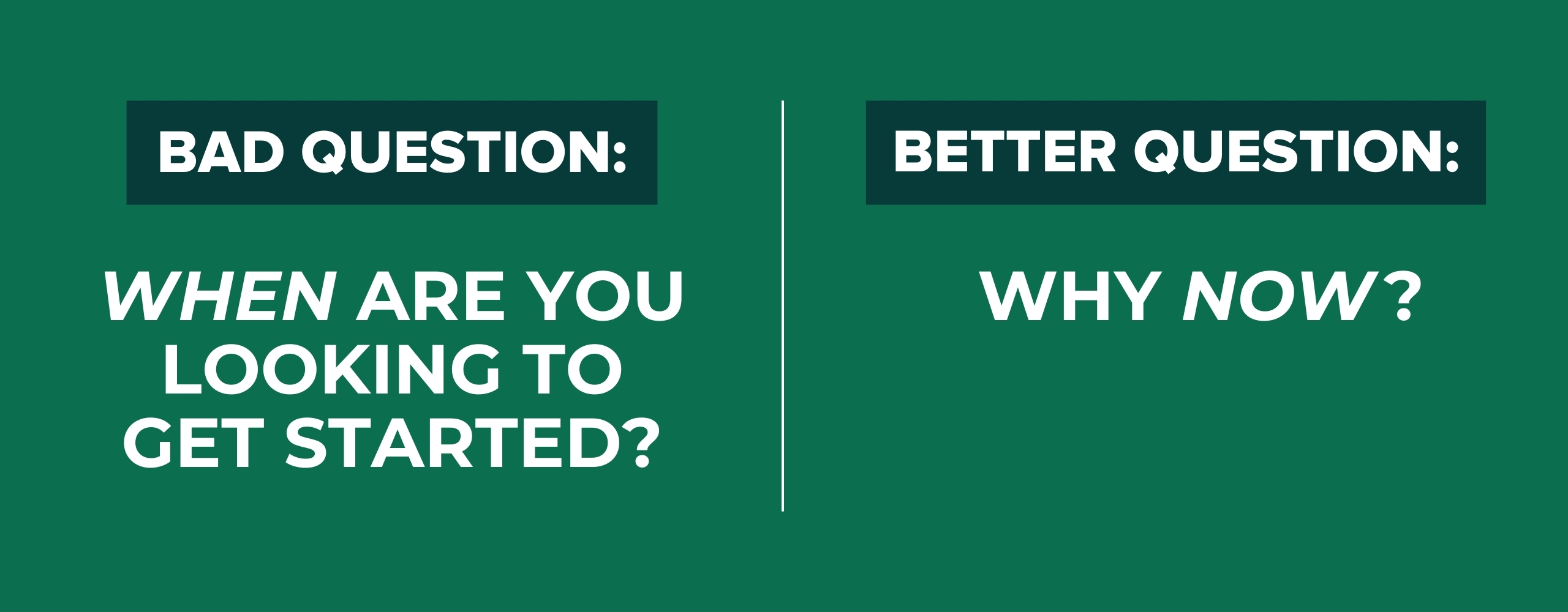
Asking why requires people to think.
When you start using this framework as a guideline, you start reevaluating every question you ask. Suddenly, the checklist questions are no good anymore. They’re replaced by variations and follow-ups that dive deeper.
Here’s an example:
Bad question: When are you looking to get started?
Better question: Why now?
Even a ho-hum question like “When are you looking to get started?” can be greatly enhanced by stripping it back to “Why now?”
All of a sudden, those surface-level answers go away. Instead, you get truth. And, if you’re patient, self-discovery.
You create space for the buyer to actually think, for themselves, and come to their own conclusions.
When this happens — and your product or offering is truly the right fit — you win every time.
If you’re ready to learn more about how to use questions to enhance your sales process, join us for our regular free consulting sessions where we tackle the biggest sales and marketing problems our guests face.


Order Your Copy of Marcus Sheridan's New Book — Endless Customers!